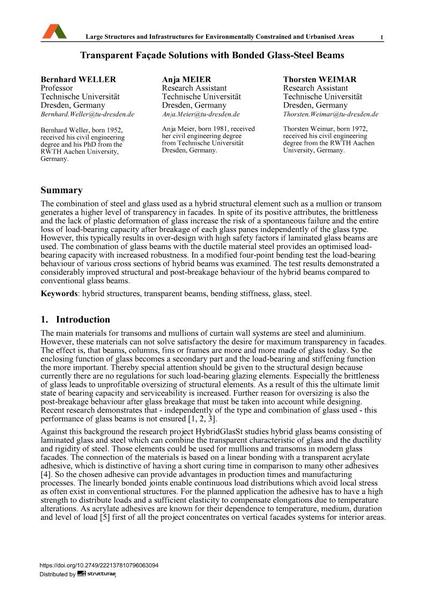Transparent Façade Solutions with Bonded Glass-Steel Beams

|
|
|||||||||||
Détails bibliographiques
| Auteur(s): |
Bernhard Weller
Anja Meier Thorsten Weimar |
||||
|---|---|---|---|---|---|
| Médium: | papier de conférence | ||||
| Langue(s): | anglais | ||||
| Conférence: | IABSE Symposium: Large Structures and Infrastructures for Environmentally Constrained and Urbanised Areas, Venice, Italy, 22-24 September 2010 | ||||
| Publié dans: | IABSE Symposium Venice 2010 | ||||
|
|||||
| Page(s): | 632-633 | ||||
| Nombre total de pages (du PDF): | 6 | ||||
| Année: | 2010 | ||||
| DOI: | 10.2749/222137810796063094 | ||||
| Abstrait: |
The combination of steel and glass used as a hybrid structural element such as a mullion or transom generates a higher level of transparency in facades. In spite of its positive attributes, the brittleness and the lack of plastic deformation of glass increase the risk of a spontaneous failure and the entire loss of load-bearing capacity after breakage of each glass panes independently of the glass type. However, this typically results in over-design with high safety factors if laminated glass beams are used. The combination of glass beams with the ductile material steel provides an optimised load- bearing capacity with increased robustness. In a modified four-point bending test the load-bearing behaviour of various cross sections of hybrid beams was examined. The test results demonstrated a considerably improved structural and post-breakage behaviour of the hybrid beams compared to conventional glass beams. |
||||
| Mots-clé: |
acier
|
||||
